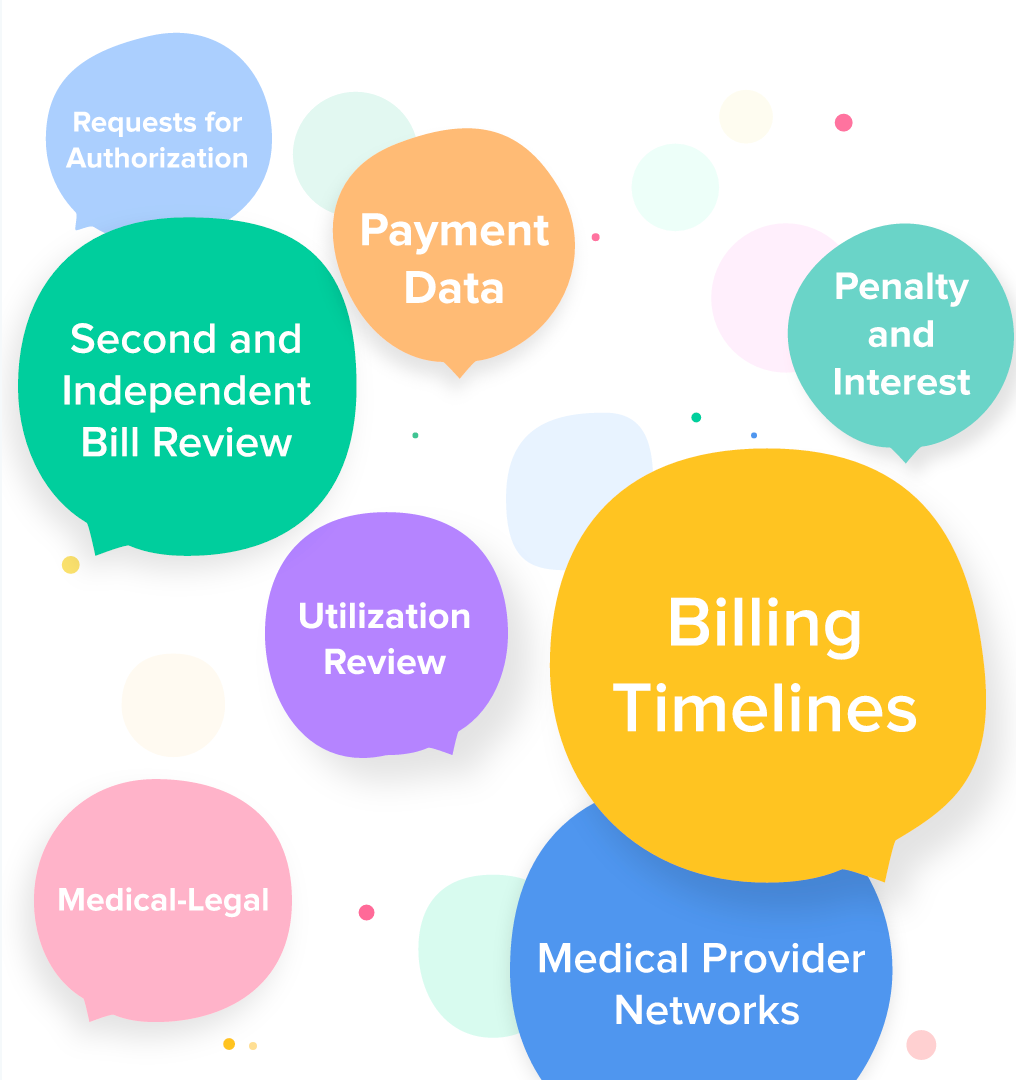CPT Codes 99358 and 99359 Resource Notebook

Changes have been made to the California OMFS since the publication of this article. Be sure to see the latest analyses here and here.
2021 OMFS updates drastically changed how E/M codes are billed. The following information may not be applicable for DOS on and after March 1, 2021.
Since the California Division of Workers’ Compensation (DWC) adopted the 2017 Physician Fee Schedule for dates of service on or after March 1, the DaisyBill team has fielded hundreds of questions from providers across the state. A great many of these questions focused on a pair of newly-reimbursable CPT codes – 99358 and 99359 – for non-face-to-face prolonged services, including but not limited to record review. Today, we answer your questions.
Say a provider agrees to treat an injured worker. To better inform their treatment, this provider is sent medical records from other providers. These records are disorganized, perhaps incomplete, and contain multitudes of irrelevant information that has no direct bearing on the current case. So the provider digs in and studies the information on his or her own time, sifting through the records to uncover any pertinent information. They are undeniably providing a service – a better-informed provider will create a better treatment plan.
Starting for all dates of service in 2017, Medicare recognizes the need to reimburse providers for this additional non-face-to-face care provided to patients. With the adoption of Medicare’s new RVU17A files, effective for all dates of service on or after March 1, 2017, the California DWC also adopted reimbursing workers’ comp providers for this additional non-face-to-face prolonged service without direct patient contact.
99358 / 99359 FAQs
Let’s move on to some frequently asked questions about these two CPT codes.
Q: Were you able to bill these codes for services prior to March 1st, 2017?
A: Technically, yes. But practically, no. You could bill for these services, but there was no specific reimbursement due because both 99358 and 99359 were previously assigned Status Code B. Payment for codes with Status Code B is always bundled into payment for other services. As of March 1, 99358 and 99359 are assigned Status Code A, and are therefore separately reimbursable.
Q: Can these codes be used in conjunction with CPT 99444 for non-face-to-face online medical evaluation?
A: No. 99444 is one of the incompatible codes with which you may not report 99358 or 99359. For more information about incompatible codes, download our 99358 & 99359 Resource Notebook below.
Q: Can Qualified Medical Evaluators (QMEs) report these codes for record review?
A: No. These codes do not apply to medical-legal evaluation bills. The Medical-Legal Fee Schedule applies to reimbursement for these evaluations.
Q: What is the reimbursement amount for these two codes in 2017? Remember, reimbursement changes annually.
A: 99358 - $149.40 and 99359 - $71.96
Q: What is the maximum time allowed per day to bill for records review? 99358 plus 99359 only cover the first 90 minutes of non-face-to-face care.
A: CPT Code 99358 can only be reported once per day, and only if the prolonged service reaches at least 30 minutes. After the first 60 minutes, 99359 is used for every subsequent half hour.
For CPT 99359 providers must meet half of the specified time before billing this code. In this case, that means that a provider must spend more than 30 minutes before billing code 99358, and more than 75 minutes before using add-on code 99359.
**** Major NCCI Changes to CPT Code 99359 - on or after April 1, 2017 providers will be reimbursed for a maximum of one unit of 99358 and two units of 99359 of non-face-to-face time per patient on any given day. Previously, no limit existed for the amount of non-face-to-face time.
The number of units for CPT 99359 is limited by Medicare’s Medically Unlikely Edits (MUEs) as published on the CMS website. An MUE for a HCPCS or CPT Code denotes the maximum units of service that a provider would report under most circumstances for a single beneficiary on a single date of service.
Medicare allows exceptions to these MUEs. Providers may report medically reasonable and necessary units of service in excess of the MUE value assigned by Medicare. CPT modifiers such as 76 (repeat procedure by same physician), 77 (repeat procedure by another physician), anatomic modifiers (e.g., RT, LT, F1, F2), 91 (repeat clinical diagnostic laboratory test), and 59 (distinct procedural service) can be used to report additional services units that exceed the MUE value assigned to a service code. Modifier 59 may also be utilized only if no other appropriate modifier describes the service.
If additional time is required beyond the 2 unit limit of 99359, the supporting documentation should clearly explain the reason the number of services reported was medically reasonable and necessary.
Q: Are there any specific requirements for supporting these codes with documentation?
A: There are no specific reporting requirements for prolonged services. Nonetheless, we strongly recommend including documentation when prolonged services are rendered.
Missed a webinar? No worries, we have a whole library of past webinars!
Take me to the webinar library
DaisyBill provides content as an insightful service to its readers and clients. It does not offer legal advice and cannot guarantee the accuracy or suitability of its content for a particular purpose.



.gif)
